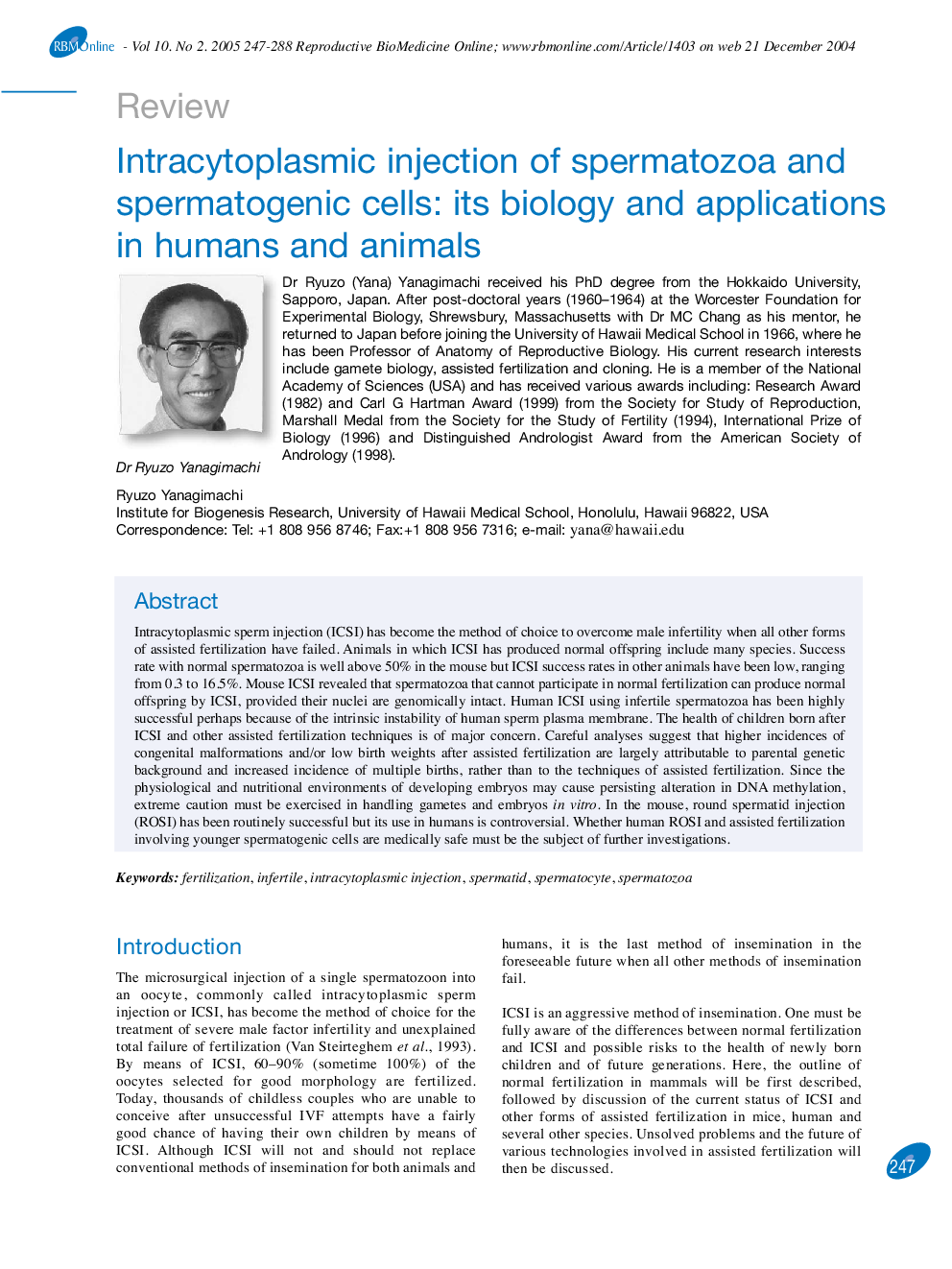| کد مقاله | کد نشریه | سال انتشار | مقاله انگلیسی | نسخه تمام متن |
|---|---|---|---|---|
| 9334901 | 1256847 | 2005 | 42 صفحه PDF | دانلود رایگان |
عنوان انگلیسی مقاله ISI
Intracytoplasmic injection of spermatozoa and spermatogenic cells: its biology and applications in humans and animals
دانلود مقاله + سفارش ترجمه
دانلود مقاله ISI انگلیسی
رایگان برای ایرانیان
کلمات کلیدی
موضوعات مرتبط
علوم پزشکی و سلامت
پزشکی و دندانپزشکی
زنان، زایمان و بهداشت زنان
پیش نمایش صفحه اول مقاله

چکیده انگلیسی
Intracytoplasmic sperm injection (ICSI) has become the method of choice to overcome male infertility when all other forms of assisted fertilization have failed. Animals in which ICSI has produced normal offspring include many species. Success rate with normal spermatozoa is well above 50% in the mouse but ICSI success rates in other animals have been low, ranging from 0.3 to 16.5%. Mouse ICSI revealed that spermatozoa that cannot participate in normal fertilization can produce normal offspring by ICSI, provided their nuclei are genomically intact. Human ICSI using infertile spermatozoa has been highly successful perhaps because of the intrinsic instability of human sperm plasma membrane. The health of children born after ICSI and other assisted fertilization techniques is of major concern. Careful analyses suggest that higher incidences of congenital malformations and/or low birth weights after assisted fertilization are largely attributable to parental genetic background and increased incidence of multiple births, rather than to the techniques of assisted fertilization. Since the physiological and nutritional environments of developing embryos may cause persisting alteration in DNA methylation, extreme caution must be exercised in handling gametes and embryos in vitro. In the mouse, round spermatid injection (ROSI) has been routinely successful but its use in humans is controversial. Whether human ROSI and assisted fertilization involving younger spermatogenic cells are medically safe must be the subject of further investigations.
ناشر
Database: Elsevier - ScienceDirect (ساینس دایرکت)
Journal: Reproductive BioMedicine Online - Volume 10, Issue 2, 2005, Pages 247-288
Journal: Reproductive BioMedicine Online - Volume 10, Issue 2, 2005, Pages 247-288
نویسندگان
Ryuzo Yanagimachi,